CarEdge saved me over 4,500 dollars on a brand new Honda Pilot. I can't say thank you enough.
Price intelligence
Find a wide range of vehicle listings with market insights on new and used listings near you.


Help us personalize your CarEdge experience — it only takes a second.
Your answers help us personalize your CarEdge journey — we’ll follow up with tips and next steps that match your buying timeline.

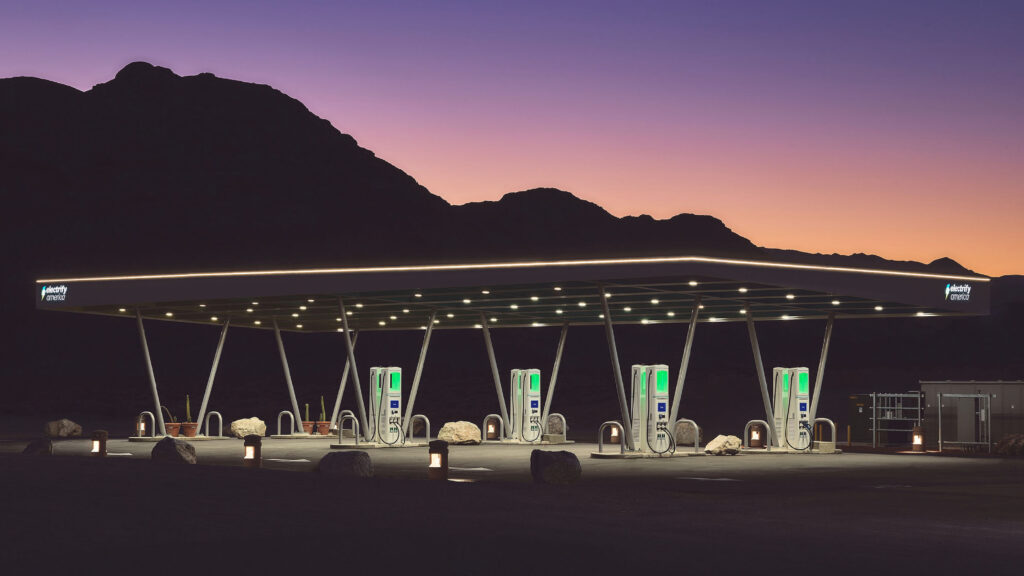
Electric vehicles are far from cheap, but many 2022 EVs come with free charging incentives that sweeten the deal. If you travel America’s interstates often, you’ll want to check out these free charging incentives. It adds up quickly!
The new Audi Q4 e-tron includes 250kWh of complimentary charging at Electrify America. Audi e-tron GT buyers get three years of free charging at Electrify America. With an EPA-rated range of 241 miles with a 77 kilowatt-hour battery pack, you’ll be good to go for plenty of charging stops. The Q4 e-tron will take about 40 minutes to charge from 10% to 80%. The much pricier e-tron GT can do the same in as little as 22 minutes.
The 2022 BMW iX SUV and i4 electric sedan will come with two years of 30-minute complimentary charging sessions at Electrify America charging stations. Depending on how much you travel, that could save you a few thousand dollars in public charging costs!
This is a better deal than it sounds. Level 2 home charging is not cheap to install, unless you’re lucky enough to live where incentives abound. Chevrolet will cover standard installation of a Level 2 charging outlet for customers who purchase or lease a 2022 Bolt EUV or Bolt EV. Learn more here. Here’s our review of the 2022 Bolt and Bolt EUV.
The 2023 Fisker Ocean is looking like it will be a popular electric crossover once it arrives. Fisker has partnered with Electrify America, however it’s not been shared if there will be a complimentary charging incentive for Ocean drivers. Regardless, it’s an amazing vehicle (on paper for now). We’re big fans of the innovative Fisker Flexee lease program.
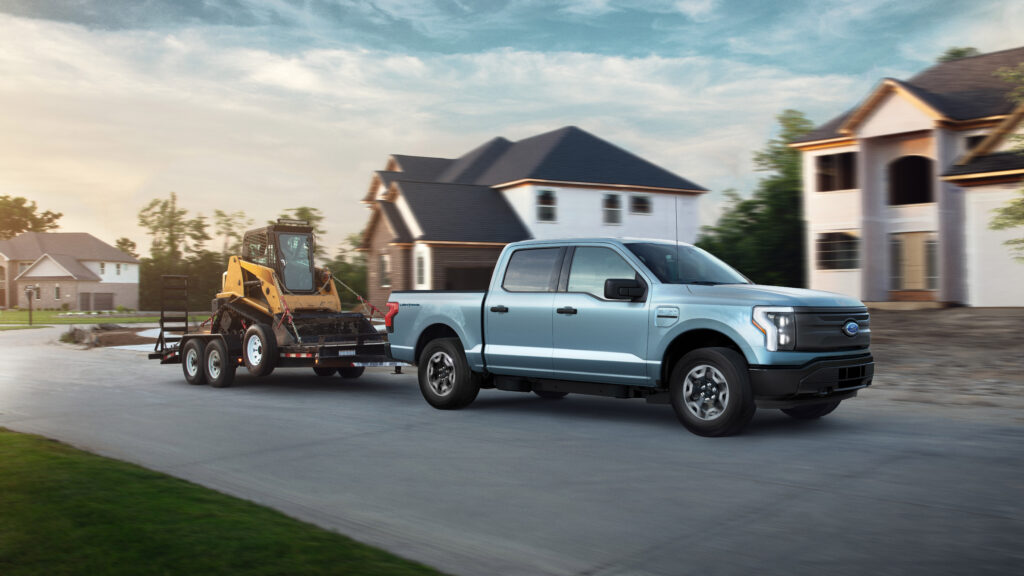
Yes, the truck we’ve all been waiting for does come with 250 kilowatt-hours of free charging at Electrify America. That’s equal to about two and a half fill-ups, or enough to drive about 700 to 800 miles in the F-150 Lightning. Once the incentive expires, expect a big charging session at Electrify America to cost about $25-35 in the F-150 Lightning. Learn more about the 2022 F-150 Lightning here.
Wondering which EVs are available in 2022? Here’s the full list, with pricing and wait times updated regularly.
Just like the F-150 Lightning, Mustang Mach-E drivers will get 250 kilowatt-hours of free charging at Electrify America. That’s enough to have about three or four free charging sessions on your first road trip. Here’s our review of the 2022 Mustang Mach-E, which by the way is one of the top-selling EVs in America (but still far behind Tesla).
The Genesis GV60 is the upscale sibling to my very own Hyundai IONIQ 5, but it comes with an even better charging incentive. Genesis GV60 buyers will get free 30-minute charging sessions for three years at Electrify America.
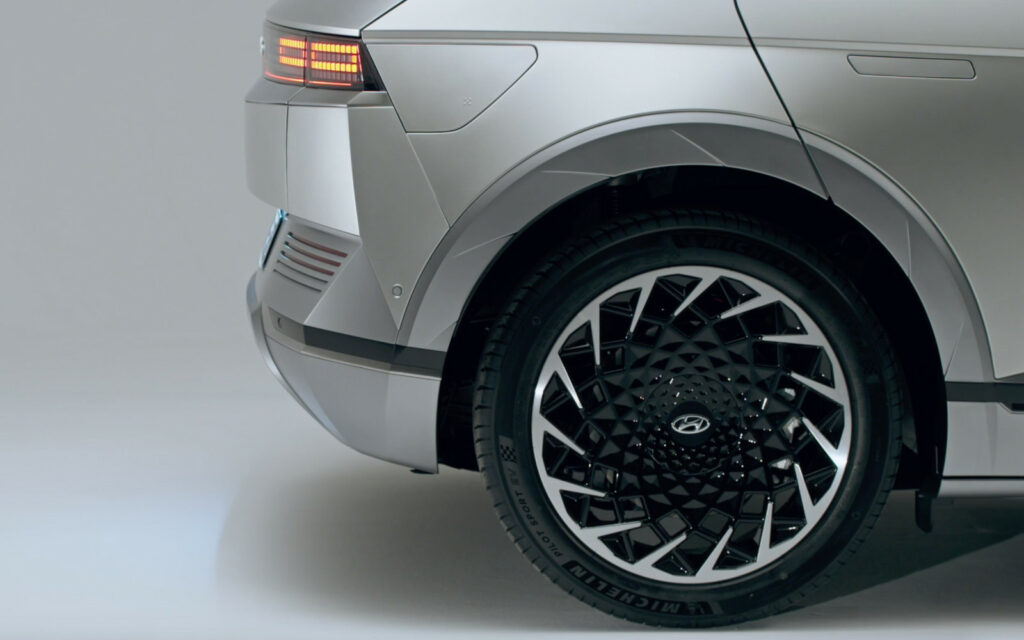
Hyundai and Kia have raced towards the top of the EV sales charts since launching their twin electric crossovers (some would argue they’re oversized hatchbacks). The Hyundai IONIQ 5 comes with two years of unlimited 30-minute charging sessions at Electrify America’s 800 stations nationwide. Electrify America is growing quickly, so it’s likely there are more than a few EA chargers along your most frequented routes.
I recently bought an all-wheel drive IONIQ 5 Limited, and I love it. Here’s how I bought one at MSRP (no markup!), plus all you ever wanted to know about the vehicle in this CarEdge review.
Kia decided to do things differently when setting up their partnership with Electrify America. EV6 owners 1,000 kilowatt-hours of free charging at Electrify America stations. The EA incentive expires after three years. With the efficiency of the Kia EV6, 1,000 kWh of free charging is likely to be good for about 3,500 miles of driving. Full review of the Kia EV6
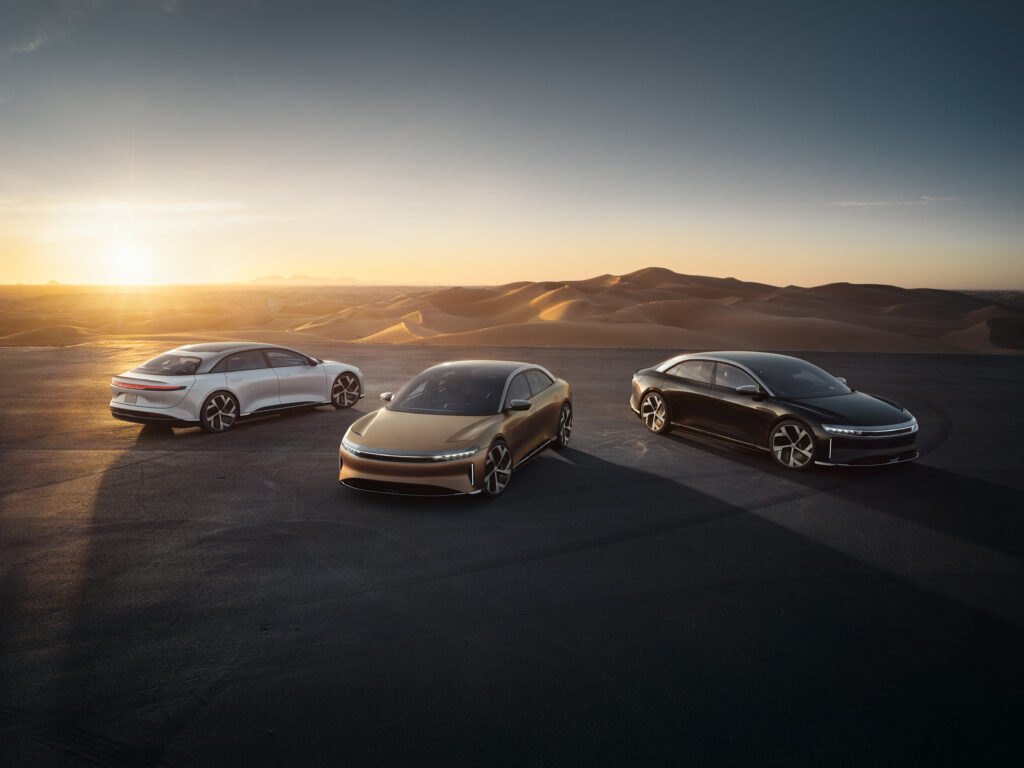
Lucid has EXTENDED their free charging partnership with Electrify America. Now, all Lucid customers who place their vehicle order before June 30, 2022 will get three years of free charging at Electrify America. Better get that wallet out! The Lucid Air starts at $77,400, however prices for top-level trims exceed $170,000. See the details here.
America’s first mass-market electric vehicle, the Nissan Leaf, is still a solid bargain in 2022.
(Check out the only cheap EVs available today)
Drivers purchasing or leasing a new Nissan LEAF receive $250 EVgo charging credits, which could last you a while with the Leaf’s 150 to 226 mile range. Here are the details from EVgo.
The first 10,000 customers who reserved a 2023 Nissan Ariya by January 31, 2022 get a $500 credit for EVgo’s growing network of charging stations. If you’re just now thinking about buying an Ariya, it’s a bit too late. Still, the Ariya is looking to be one of the nicest Nissan’s ever. Is it worth the price tag? Here’s what we think.

The Polestar 2 has several advantages over its competitors: it’s available now, starts under 50 grand, and features a no-haggle direct-to-consumer price. Another benefit of the Polestar 2 is a free charging incentive. The Polestar 2 comes with two years of free 30-minute charging sessions at Electrify America stations. That could save drivers thousands of dollars, depending on how many road trips you take.
Although it’s fantastic that Rivian is building its own charging network (like Tesla did), it’s a bit of a letdown for Rivian buyers who hoped to get a free charging incentive at Electrify America. The map below is where Rivian plans to have Adventure Network chargers, NOT where they currently are. All buyers of the Rivian R1T electric truck and R1S electric full-sized SUV will get one year of free charging on the Rivian Adventure Network.

The upside? This charging network will be specializing in rural destinations like National Parks, National Forests and the like. That will be transformative for charging in America.
Despite announcing a ‘partnership’ with America’s third-largest charging network EVgo, there’s no free charging incentive for now. As mentioned above, EVgo has 800 public fast-charging locations and 1,200 Level 2 charging stalls spanning 68 metropolitan areas and 35 states.
Although we’re a Subaru household (prior to taking ownership of our new IONIQ 5), the Solterra EV’s range, charging speed and price are a real bummer. Here’s our full review of the 2023 Subaru Solterra.
Back in the early days of the Model S, Tesla did offer insanely good free charging incentives on its young Supercharger network. From 2012 to 2018, some Tesla vehicles had free charging for life. If you’re looking for free charging or generous federal EV incentives, you’ll have to shop elsewhere.
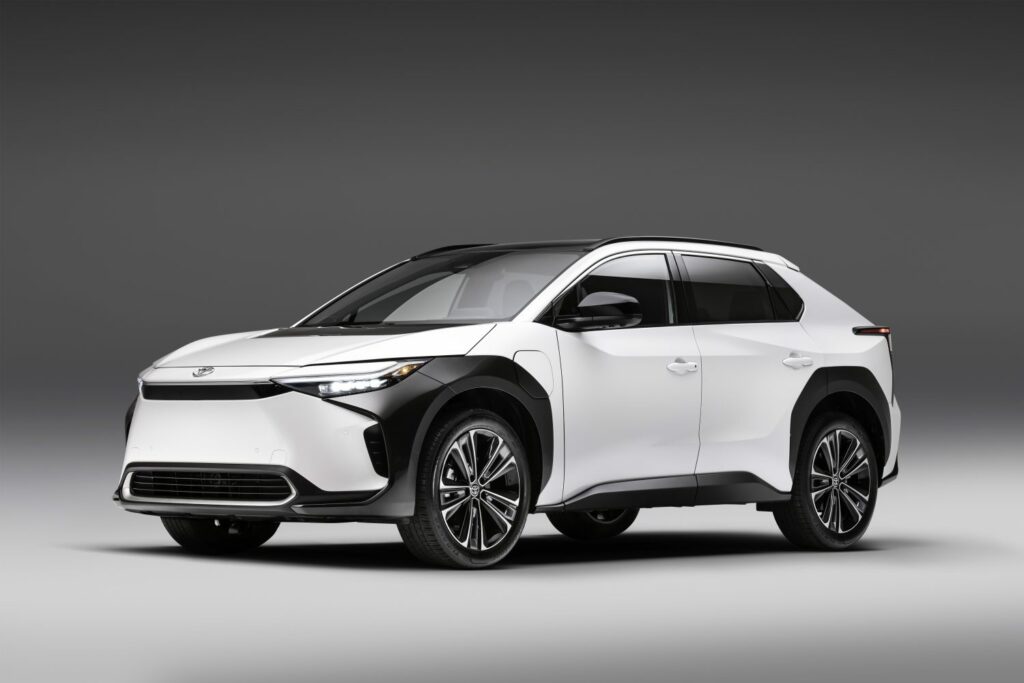
The all-new Toyota bZ4X electric crossover takes an hour to charge (at a ‘fast’ charger), has merely okay range, and isn’t all that affordable, but at least you get one year of free charging at EVgo’s network of chargers. EVgo has 800 public fast-charging locations and 1,200 Level 2 charging stalls in 35 states. Here’s why we aren’t fans of the bZ4X. Just buy a RAV4 Prime! That’s probably what Toyota wants you to do anyway.
The ID.4 has one of the best free charging incentives available today. Although the 2021 model year’s offer of three years of UNLIMITED free charging has ended, the 2022 Volkswagen ID.4 includes three years of free 30-minute charging sessions at Electrify America stations. With the 2022 model’s quicker charging rate and improved charging curve, this should be enough for most sessions to be free. Rarely will ID.4 drivers need to stay plugged in for more than 30 minutes at a DC fast charger. Full review of the VW ID.4
Buyers of the C40 Recharge and XC40 Recharge get 250 kilowatt-hours of free charging at Electrify America. But that’s not all: Volvo is also enticing drivers with a year of free access to Electrify America’s Pass+ membership, which offers charging at a discounted rate. The Pass+ membership offers charging at about 30% lower rates than using the network as a guest, but membership normally costs $4 per month.
Making the switch to an electric vehicle would be a no-brainer if they weren’t so darn expensive. It’s hard to find a cheap EV, but a few are out there. For many, free charging incentives are compelling enough to close the deal. Personally, I’ve saved a few hundred dollars in charging costs over the first few months of EV ownership by using my IONIQ 5’s Electrify America incentive.
This begs the question: would you rather have faster charging times, or longer range? Does stopping for 15 minutes every 200 miles sound better than stopping for 45 minutes every 300? Let us know what you think the future of EV charging should look like. One thing is for sure, EVs are coming to roads near you.
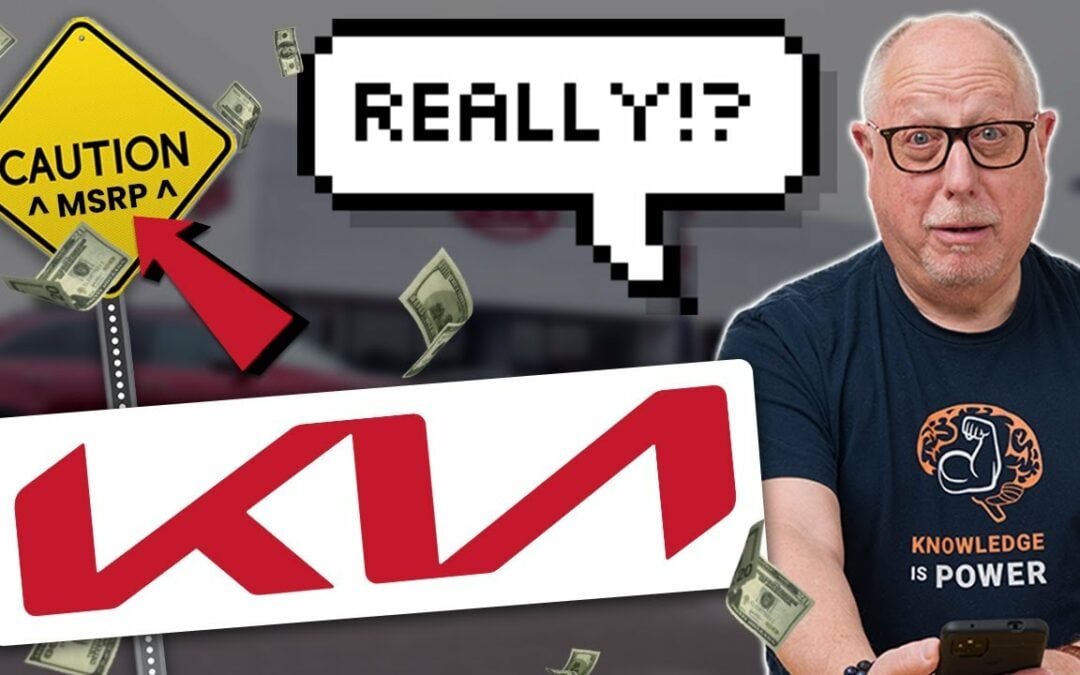
Over the past two years, the median household income in the United States has nudged upward from $67,500 to $75,500 as of March 2022. Meanwhile, new cars have risen from an average transaction price of $37,000 in early 2020 to $46,000 today, a 24% increase. The cost of transportation in our very car-dependent country has climbed above what’s possible for most driver’s budgets. Now, more than ever, price matters. These are the most marked up cars in 2022.
Consumer Reports recently released eye-opening data on the price disparities between automakers as dealer markups amplify the madness of the auto industry in 2022. Kia is overwhelmingly the winner of the award for most ridiculous new car pricing in 2022.
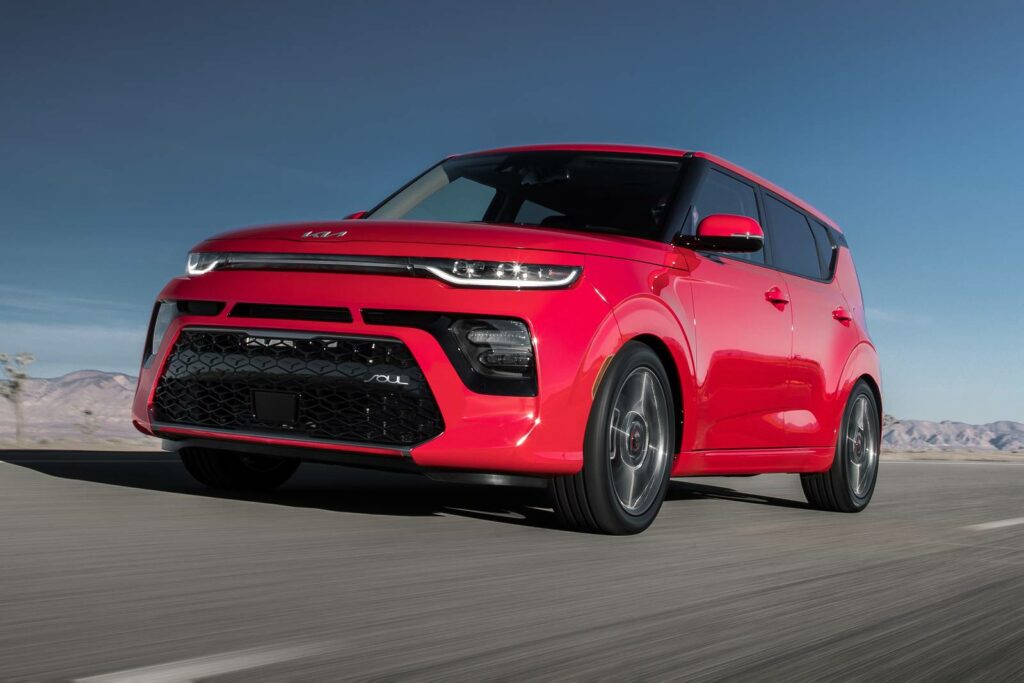
The 2022 Kia Soul is a subcompact SUV that car buyers are eager to get their hands on. In fact, demand is so high that Kia dealers keep pushing the limits of Kia Soul pricing ever higher. In 2022, Consumer Reports finds that the average price for a Kia Soul in the US is 21% over MSRP.
When we take a look at CarEdge Car Search, we see that there are just over 1,000 new Kia Souls for sale in America right now. The Soul is in short supply. Shockingly, some go for nearly $40,000! Sure enough, CarEdge Car Dealer Reviews shows that buyers are having a hard time finding a good deal on the Soul in 2022.
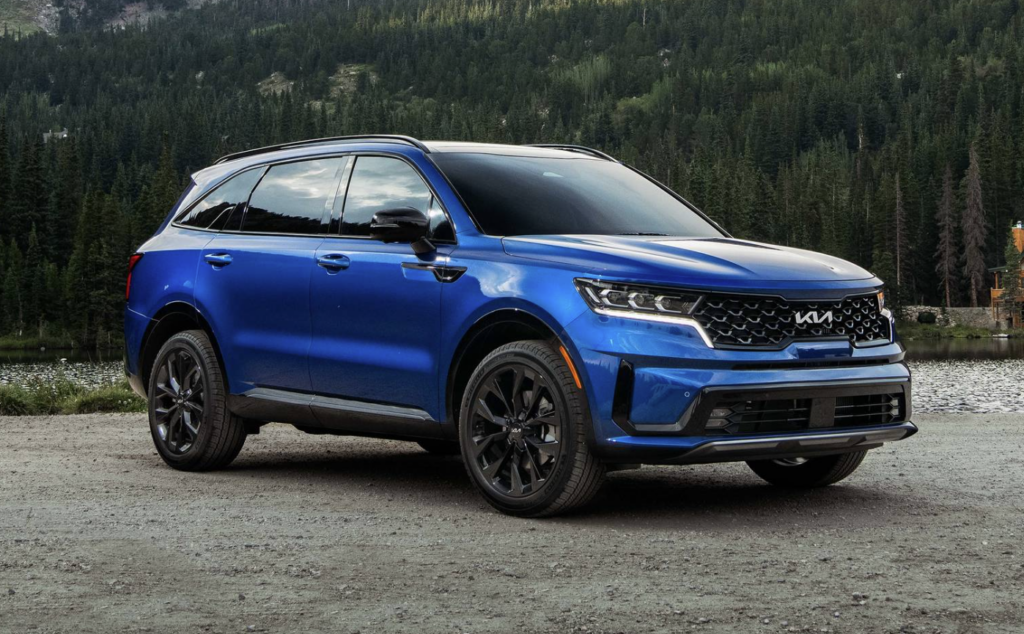
Kia’s hot-selling mid-size SUV is also listed for 21% over MSRP on average. Kia has been able to keep a higher supply of Sorentos on dealer lots, with nearly 3,000 available nationwide. I just about dropped my coffee when I saw that Kia Sorento plug-in hybrids (PHEVs) are listed for over $60,000 in some parts of the country. See the Sorento listings near you here.
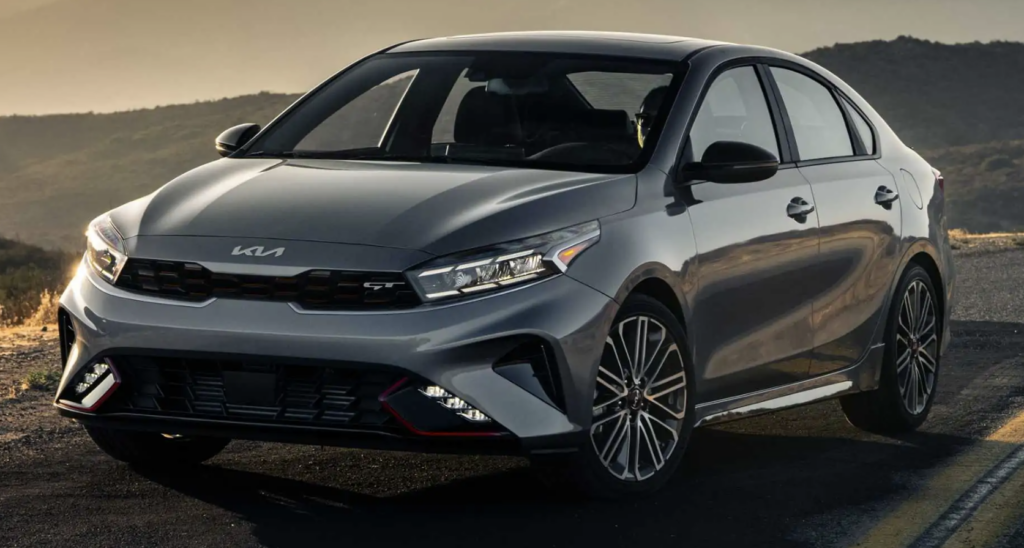
The third Kia model with a 21% average markup in 2022 is the Forte budget sedan. The consensus among reviewers of the Forte is that it’s simply an ‘okay’ car. Is it worth $34,000? Some dealers seem to think so.
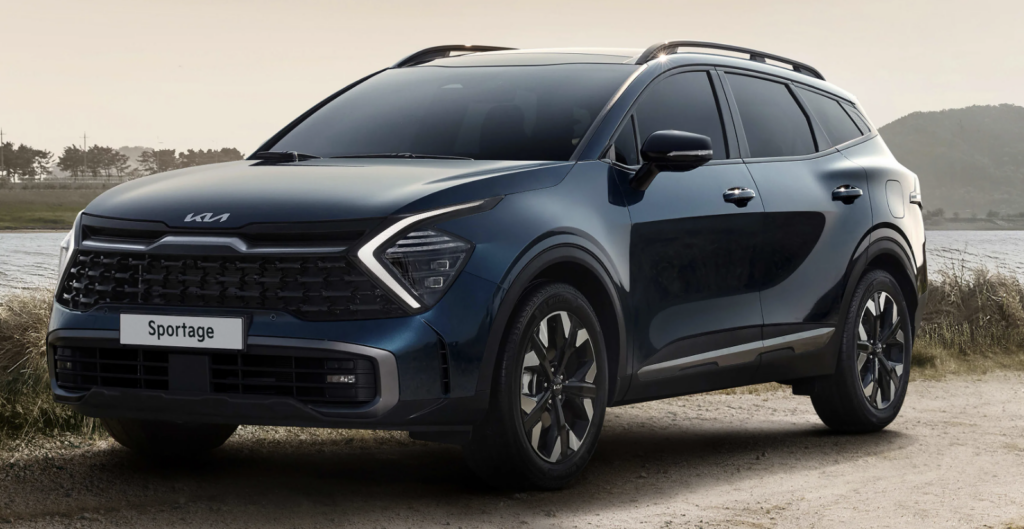
With a 19% average markup, this typically affordable compact SUV is no longer cheap. The Sportage has a starting MSRP of $24,090, but it’s very hard to find one under $35,000, and some approach $50,000. Would you pay that much for a Kia compact SUV?
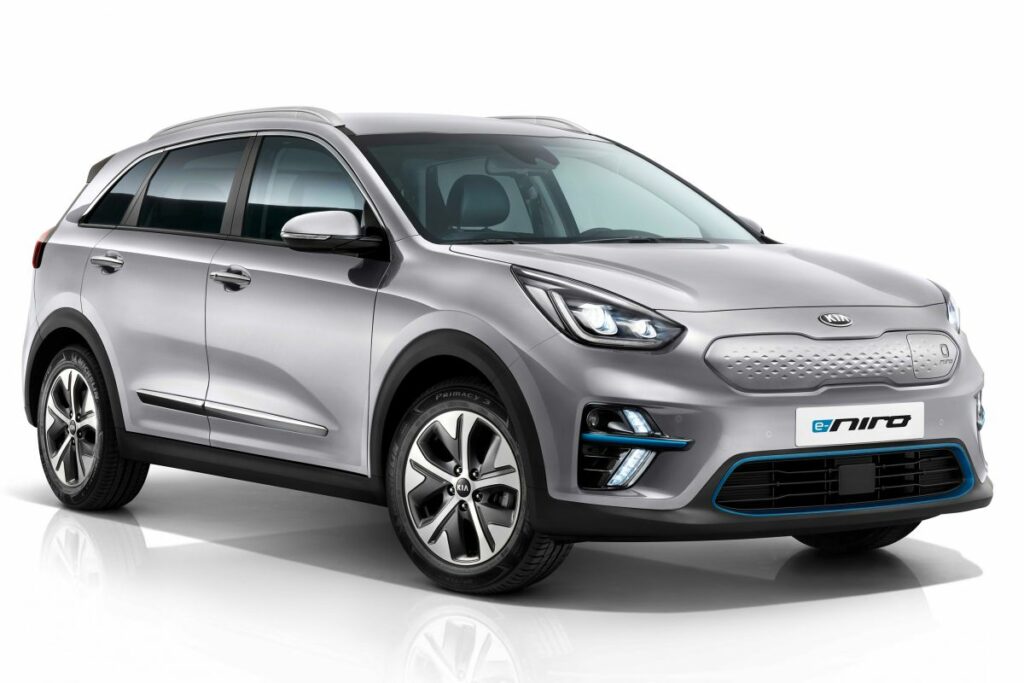
The Niro is popular, having sold well over 20,000 units annually in the U.S. before the chip shortage slashed production. Does its popularity justify the 19% average markup on the Niro? The electric version of the Niro has seen the most ludicrous price increases. Although the MSRP for a 2022 Niro EV EX Premium is $44,650, dealer prices reach up to $52,000 before taxes and fees.
It’s not just new car prices that are out of control. At CarEdge, we’ve been tracking used car price trends, and it’s hardly any better at the auction house. Seasonal price trends have gone out the window, and supply chain disruptions continue to put a damper on any semblance of normalcy. We’ve seen new car inventory plummet and struggle to climb back at all.
What will it take for the car price bubble to burst? Supply will have to catch up to demand. Until that happens, dealers (and automakers) have the upperhand when it comes to pricing. Be sure to join the CarEdge Community to stay up to date with the very latest car price and inventory news.

October 2022 Update: Hyundai and Kia models with dual-clutch transmissions are subject to a new recall and stop-sale. Model year 2021 – 2023 vehicles are included. See the details below.
A recall remains in effect for the Kia Telluride and Hyundai Palisade. This recall is separate from another recall earlier this year in which nearly 6 million vehicles produced between 2011 and 2019 were flagged for separate fire risks. See the details and learn how to check if your VIN number is included below.
Let’s dive in to what you need to know about Kia & Hyundai fire recalls.
| NHTSA Recall ID | Vehicle Make | Vehicle Model(s) | # Vehicles Recalled | Recall Date |
|---|---|---|---|---|
| 21V331 | KIA | 2013-15 Optima and 2014-15 Sorento | 440,270 | 5/10/2021 |
| 21V308 | HYUNDAI | 2021 Santa Fe | 2 | 5/3/2021 |
| 21V301 | HYUNDAI | 2019-20 Elantra, 2019-21 Kona and Veloster | 125,840 | 4/28/2021 |
| 21V303 | HYUNDAI | 2013-15 Santa Fe Sport | 151,205 | 4/28/2021 |
| 21V277 | KIA | 2022 Kia Carnival | 2,744 | 4/21/2021 |
| 21V259 | KIA | 2021 Seltos, 2020-21 Soul | 147,249 | 4/13/2021 |
| 21V208 | HYUNDAI | 2021 Genesis G80, GV80 | 147 | 3/25/2021 |
| 21V160 | HYUNDAI | 2015-16 Genesis, 2017-2020 Genesis G80 | 94,646 | 3/10/2021 |
| 21V161 | HYUNDAI | 2019-21 Genesis G70 | 552 | 3/10/2021 |
| 21V137 | KIA | 2017-19 Cadenza, 2017-21 Sportage | 379,931 | 3/4/2021 |
| 20V750 | KIA | 2012-2013 Sorento, 2012-2015 Forte and Forte Koup, 2011-2013 Optima, Hybrid, 2014-2015 Soul, and 2012 Sportage | 294,756 | 12/2/2020 |
| 20V746 | HYUNDAI | 2012 Santa Fe, 2011-13 and 2016 Sonata Hybrid, 2015-16 Veloster | 128,948 | 12/1/2020 |
| 20V630 | HYUNDAI | 2019-2020 Kona | 6,707 | 10/13/2020 |
| 20V543 | HYUNDAI | 2016-2021 Tucson | 652,054 | 9/4/2020 |
| 20V518 | KIA | 2019 Stinger | 9,443 | 8/27/2020 |
| 20V519 | KIA | 2013-15 Optima and 2014-15 Sorento | 440,370 | 8/27/2020 |
| 20V520 | HYUNDAI | 2013-15 Santa Fe Sport | 151,205 | 8/27/2020 |
| 20V399 | KIA | 2020 Sedona | 5,385 | 7/8/2020 |
| 20V393 | HYUNDAI | 2011-2012 Elantra and Sonata Hybrid, 2012 Accent and Veloster | 272,126 | 7/2/2020 |
| 20V121 | HYUNDAI | 2013-2014 Sonata | 206,896 | 2/28/2020 |
| 20V100 | KIA | 2013-2014 Optima | 141,774 | 2/21/2020 |
| 20V101 | KIA | 2011-2012 Sedona | 51,465 | 2/21/2020 |
| 20V088 | KIA | 2006-2010 Sedona and 2007-2009 Sorento | 228,829 | 2/14/2020 |
| 20V061 | HYUNDAI | 2007-2010 Elantra and 2009-2011 Elantra Touring | 476,111 | 2/4/2020 |
| 19V204 | HYUNDAI | 2013 Veloster | 16,487 | 3/14/2019 |
| 19V120 | KIA | 2012-16 Soul | 378,967 | 2/22/2019 |
| 19V101 | KIA | 2011-12 Sportage | 32,296 | 2/15/2019 |
| 19V063 | HYUNDAI | 2011-13 Tucson | 120,000 | 2/5/2019 |
| 18V934 | HYUNDAI | 2011-2014 Sonata and 2013-14 Santa Fe Sport | 150,730 | 12/28/2018 |
| 18V907 | KIA | 2011-2014 Optima, 2011-2013 Sportage, 2012-2014 Sorento | 71,653 | 12/19/2018 |
| 18V754 | KIA | 2018 Stinger | 16,011 | 10/25/2018 |
| 18V704 | HYUNDAI | 2017-18 Ioniq | 10,575 | 10/5/2018 |
| 18V666 | KIA | 2017-2018 Niro | 27,030 | 9/25/2018 |
| 18V260 | HYUNDAI | 2017 Ioniq | 10,156 | 4/24/2018 |
| 18V257 | KIA | 2017 Niro | 27,029 | 4/20/2018 |
| 18V026 | HYUNDAI | 2006 Sonata, 2006-11 Azera | 87,854 | 1/9/2018 |
| 17V586 | KIA | 2017 Sorento | 62 | 9/21/2017 |
| 17V578 | HYUNDAI | 2017 Santa Fe | 420 | 9/20/2017 |
| 17V224 | KIA | 2011-2014 Optima, 2011-2013 Sportage, 2012-2014 Sorento | 618,160 | 3/31/2017 |
| 17V226 | HYUNDAI | 2013-2014 Sonata and Santa Fe Sport | 572,000 | 3/31/2017 |
| 16V815 | KIA | 2008-09 Sportage | 71,704 | 11/10/2016 |
| 15V568 | HYUNDAI | 2011-2012 Sonata | 470,000 | 9/10/2015 |
| 15V015 | KIA | 2014 Forte | 86,880 | 1/16/2015 |
| 11V256 | KIA | 2004-07 Spectra | 58,322 | 4/25/2011 |
| 10V388 | KIA | 2010 Soul, 2011 Sorento | 35,185 | 8/31/2010 |
Hyundai and Kia owners began suing the automakers in 2015 after they refused to pay to repair or replace the Theta II engine. Hyundai settled the class-action suit.
What is this lawsuit about?
The people who filed these lawsuits are called Plaintiffs, and the companies they sued, HMA, HMC, and others, are called Defendants. The Plaintiffs allege that the Class Vehicles suffer from a defect that can cause engine seizure, stalling, engine failure, and engine fire. They also allege that engine seizure or stalling can be dangerous if experienced. Furthermore, the Plaintiffs also allege that some owners and lessees have been improperly denied repairs under the vehicle’s warranty. HMA and HMC deny Plaintiffs’ allegations.
Which Hyundai vehicles are included?
The “Class Vehicles” are 2011–2019 model year Hyundai Sonata, 2013–2019 model year Hyundai Santa Fe Sport, and 2014–2015 and 2018–2019 model year Hyundai Tucson equipped with 2.0 liter and 2.4 liter genuine Theta II gasoline direct injection engines within OEM specifications.
What can I get from the settlement?
On August 22, 2022, the NHTSA issued a recall and stop-sale for model year 2020-2022 Hyundai Palisades in the United States. 245,030 Palisades are impacted. Affected new Palisades will not be available for purchase until they have received the recall fix.
The recall is due to a newly discovered fire risk that has resulted in three fires in Canada, and several instances of melted components.
A safety report filed with the NHTSA explains that debris and moisture accumulation on the tow hitch harness module printed circuit board may cause an electrical short, which can result in a fire.
See if your Hyundai Palisade VIN number is included in this recall at Hyundai’s official recall checker.
On August 22, 2022, the NHTSA also issued a recall and stop-sale for model year 2020-2022 Kia Tellurides in the United States. 36,417 Kia Telluride VIN numbers are impacted. The stop-sale means that affected new Tellurides will not be available for purchase until they have received the recall fix.
Just as with the Hyundai Palisade recall, the Telluride recall is due to a newly discovered fire risk that has resulted in three fires in Canada, and several instances of melted components.
A safety report filed with the NHTSA earlier this month explains the risk of concern. Debris and moisture accumulation on the tow hitch circuit board may cause an electrical short. If a short occurs, accumulated debris may ignite and cause a fire.
See if your Kia Telluride VIN number is included in this recall at Kia’s official recall checker.
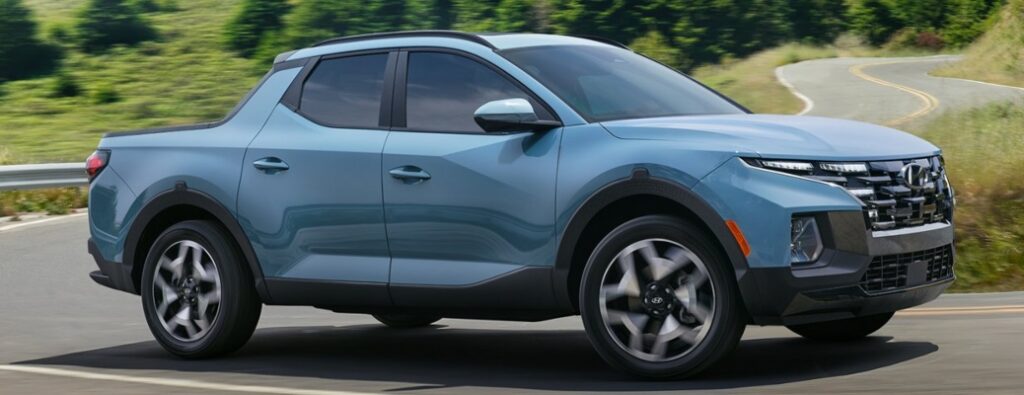
A new Hyundai and Kia recall was issued in October 2022 for models equipped with dual-clutch transmissions. This includes the following vehicles:
Hyundai
2021-2022 Hyundai Sonata
2022 Hyundai Santa Cruz
2022 Hyundai Elantra N
2021-2022 Hyundai Velostar N
2022 Hyundai Kona N
2021-2022 Hyundai Santa Fe
Kia
2021-2022 Kia Sorento
2021-2023 Kia K5
See if your Hyundai or Kia vehicle is included in this recall at the NHTSA’s official recall page.
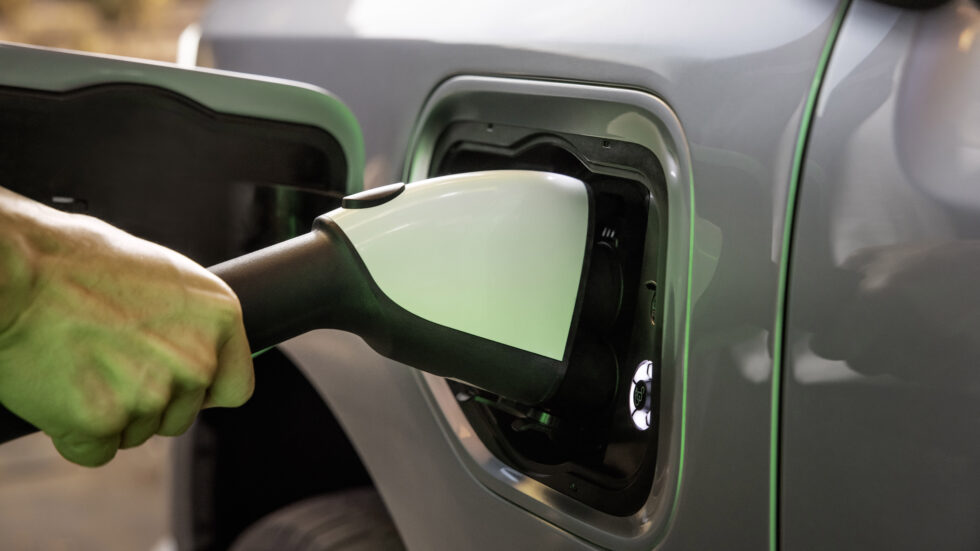
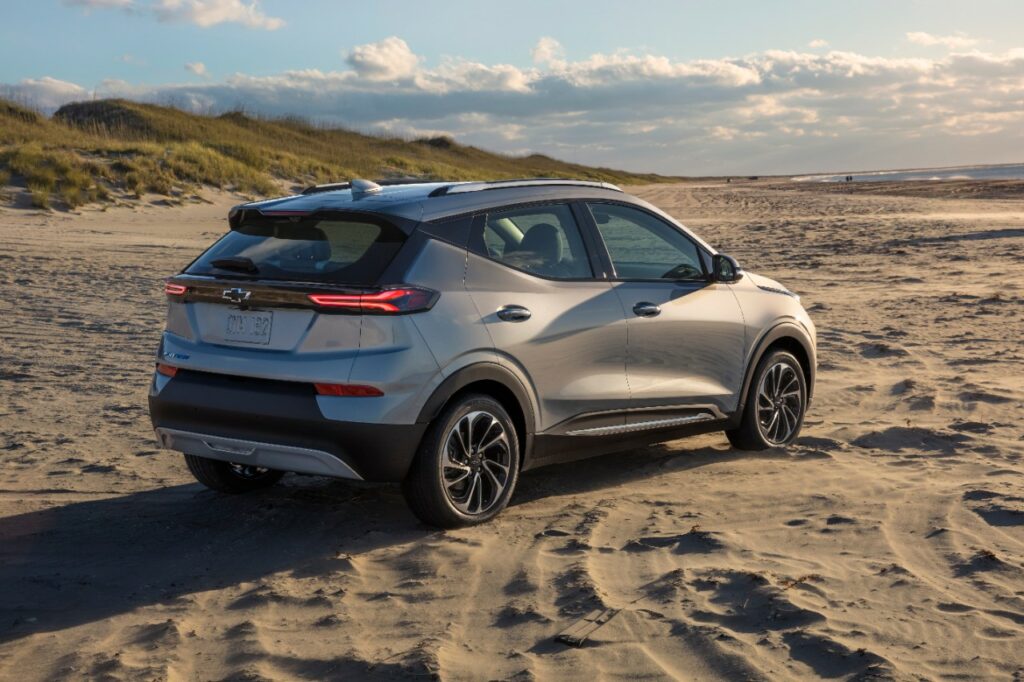
If you’re in the market for an affordable electric vehicle, you’ve likely already arrived at the realization that ‘affordable’ doesn’t mean cheap in 2022. In fact, our own CarEdge list of the best affordable electric cars features one car (the Tesla Model 3) that now starts just shy of $50,000. Are there any truly cheap electric cars available today? You may be surprised with what we found.
After earlier rumors suggested that the Nissan LEAF was to be discontinued, a Nissan executive recently stated that the LEAF is here to stay. That’s GREAT news for EV affordability.
We must point out that General Motors decided to slash the price of the LEAF’s competitor, the Chevy Bolt, to steal the title of ‘cheapest EV in America.’ More on that below.
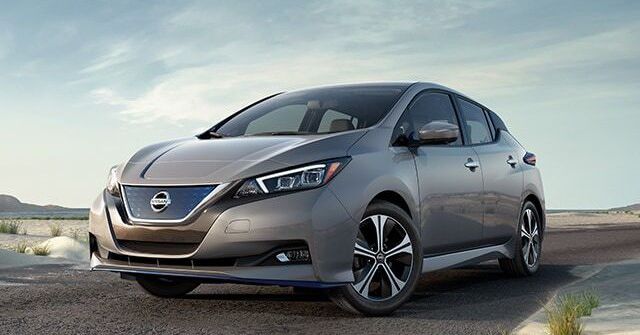
Price: Starting at $27,400
Range: 150 to 226 miles, depending on battery size
Charging Speed: Either 50 kW or 100 kW speeds, depending on battery
Tax credit: It qualifies!
Available at dealers now: See who has inventory at CarEdge Car Search: Nissan Leaf
Tesla is the face of electric cars today, but for years it was the Nissan Leaf at center stage. When Nissan brought the Leaf to market in 2010, it was a short-ranged novelty that somehow began to catch on. With just 73 miles of range on a good day, the first iteration of the Leaf was a bug-eyed appliance good for around town, but not much else.
Over a decade later, and the 2022 Nissan Leaf is a lot better than the first. However, it’s still a budget vehicle, and you get what you pay for. Still, it’s a great entry point into EVs for many. The Leaf now has enough range to make regional travel realistic, but charging speeds have unfortunately remained too slow to make it easy. If you’re eager to get into an electric car for under $30,000, you’ll surely want to check out the 2022 Nissan Leaf.
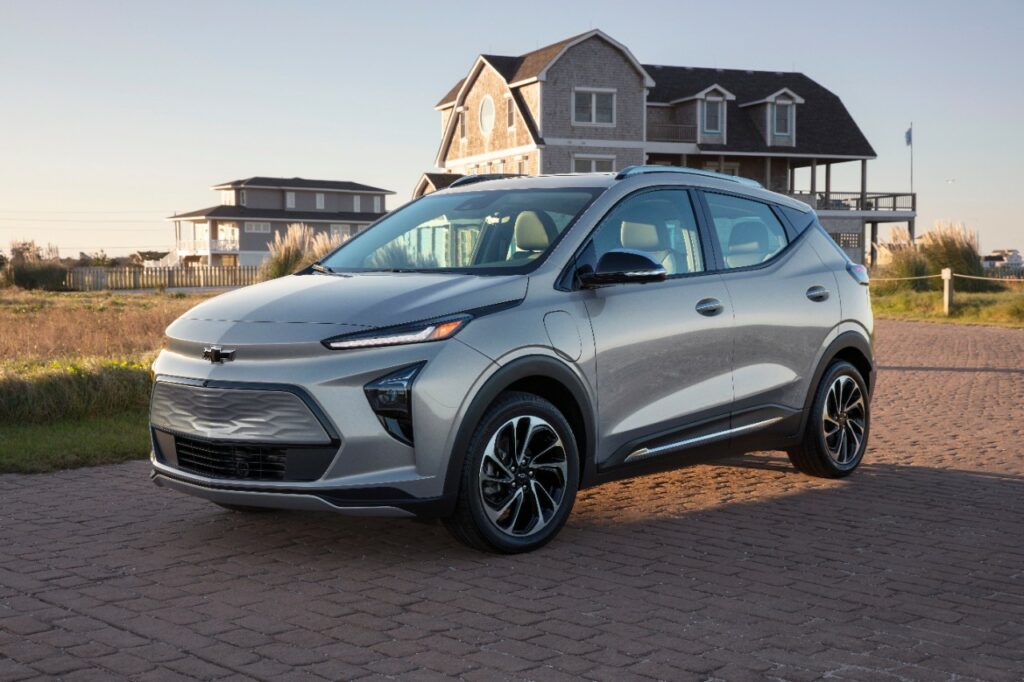
Price: Starting at $26,595
Range: 259 miles
Charging Speed: 55 kW speeds (adds 100 miles in 30 minutes of charging)
Tax Credit: The Bolt no longer qualifies for the federal EV tax credit, but state incentives may apply
The 2023 Chevy Bolt is the cheapest electric car today. It is available at dealers nationwide, as long as the mandatory recall fixes have been completed. See who has inventory at CarEdge Car Search: Chevrolet Bolt and Bolt EUV
General Motors has sold over 100,000 Chevrolet Bolt EVs since launching the subcompact crossover in 2016. In 2021, the Bolt gained a new sibling: the larger Bolt EUV. Shortly after the Bolt EUV joined the show, several Bolt battery fires spurred a very urgent recall into action. When all was said and done, battery supplier LG Chem was found to be responsible for the Bolt battery fires, and agreed to pay General Motors $2 billion in damages.
Fast forward to 2022, and most Chevrolet Bolt’s (all for sale) have received new battery packs. The Bolt is a GREAT deal now that it’s fixed. If you’re never in a rush on road trips (or just plan to use the car around town), the 2022 Chevrolet Bolt is worth a look. It charges painfully slow, but hey, it is the cheapest electric car today.
If you check out used Bolts, request official documentation showing that all recall work was completed. The Bolt will be eligible for the new EV tax credit here in the United States, but only after 1/1/2023. See our full guide to EV tax credits for more info.
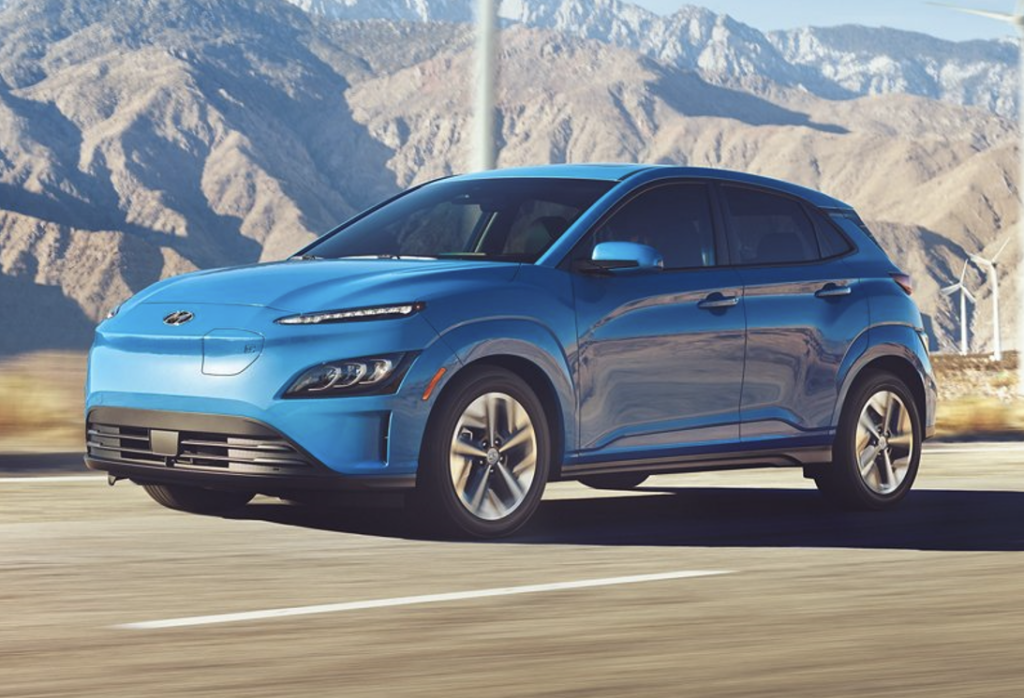
Price: Starting at $34,000
Range: 258 miles
Charging Speed: 100 kW speeds (180 miles added in 47 minutes)
Tax Credit: It qualifies!
Available at dealers nationwide. See who has inventory at CarEdge Car Search: Hyundai Kona EV
The 2022 Hyundai Kona EV is no Tesla, but it has decent range and room to fit most lifestyles. Plus, it’s really cheap AND still qualifies for the $7,500 federal tax credit.
For just $34,000 before incentives, you can become the owner of the original Hyundai EV. This front-wheel drive subcompact crossover gets 258 miles on the charge, exceptional range for a budget EV. Some owners get over 275 miles on a single charge. The Limited trim, top-of-the-line option comes in at $42,500.
If you plug in at home, charging to 100% from a 240-volt dryer outlet will only take you about 9 hours from 10% state of charge. That will get you a full battery overnight while you’re sleeping. At a fast charger, the Kona is behind the competition. In 47 minutes, the Kona Electric charges from 10% to 80% capacity.
The all-new Hyundai IONIQ 5 has stolen the show with more range, MUCH faster charging, and retro looks, but it starts closer to $45,000 with destination and availability is very limited. For those who are willing to give up a few luxuries, the Hyundai Kona EV is a solid choice.

Price: Starting at $39,990
Range: 239 miles
Charging Speed: 100 kW at a DC fast charger (adds 100 miles of range in about 30 minutes)
Tax Credit: It qualifies!
Available at dealers nationwide. See who has inventory at CarEdge Car Search: Kia Niro EV
The Kia Niro electric version is the sibling to the aforementioned Hyundai Kona EV. Both source their power from a 64 kilowatt-hour battery, which is a tad smaller than more expensive electric cars. The Niro EV can charge at up to 100 kilowatt speeds at a fast charger. At least that’s better than the Nissan LEAF and Chevy Bolt.
The Niro EV’s back seat is slightly more spacious than the Kona’s, so it’s more popular with families and those with large pets. There’s also a plug-in hybrid version. For just a few thousand dollars more, keep in mind that you could check out the base trims of the newer Kia EV6, Hyundai IONIQ 5 and Volkswagen ID.4.
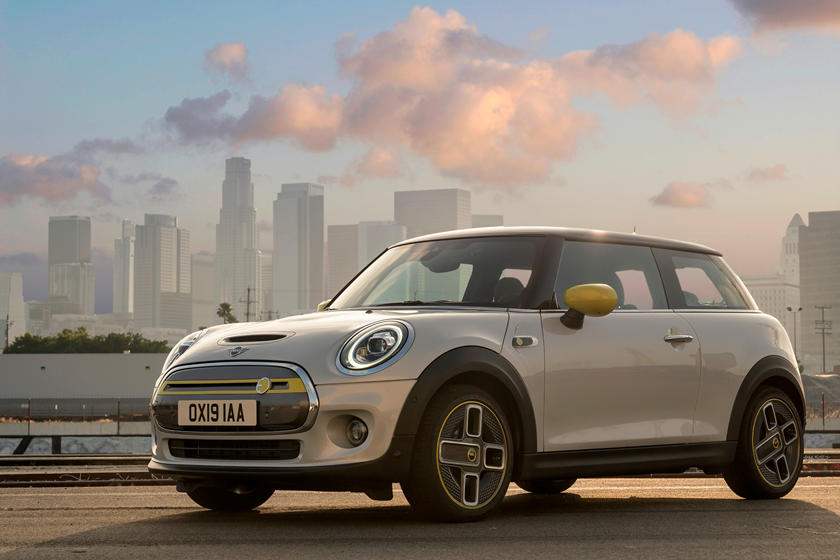
Price: $30,750
Range: 114 miles
Charging Speed: 50 kW speeds (about 90 miles of range in 36 minutes)
Tax Credit: It qualifies!
Available at select dealers nationwide. See who has inventory at CarEdge Car Search: MINI Cooper Electric
For just over $30,000, you can own an electric Mini. It’s practically a luxury golf cart! Jokes aside, it’s not a bad deal IF you don’t plan to go very far. With 114 miles of EPA-rated range, it’s a zippy way to scoot around town.
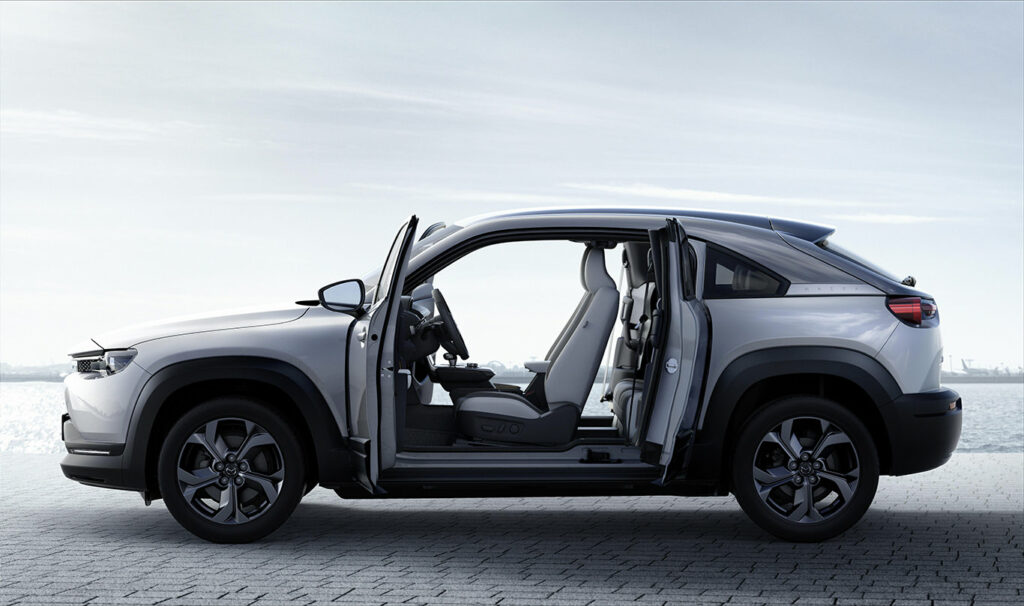
Price: $34,695
Range: 100 miles
Available in California to those who don’t travel much. Check it out if you must at CarEdge Car Search: Mazda MX-30
Why didn’t I include Mazda’s first fully-electric vehicle on this list? It’s a brand-new model, yet it only gets 100 miles of range on a charge. That, and the fact that it is only sold in California as a regulatory compliance vehicle for now. Come on, Mazda! That’s not enough range to safely make it across Los Angeles!
An electric car under $35,000? Sounds like science fiction, but as you can see, a few can be had for what used to be considered average car prices. Most of these cheap electric cars don’t have the best range, the fastest charging or the need for speed, but they won’t drain the bank like a Tesla will. Let me know which cheap EVs you’re checking out in 2022.
Some parting advice: consider all options, and test drive as many electric vehicles as you can. You’ll be amazed at what’s out there, and even more amazed at what’s to come.
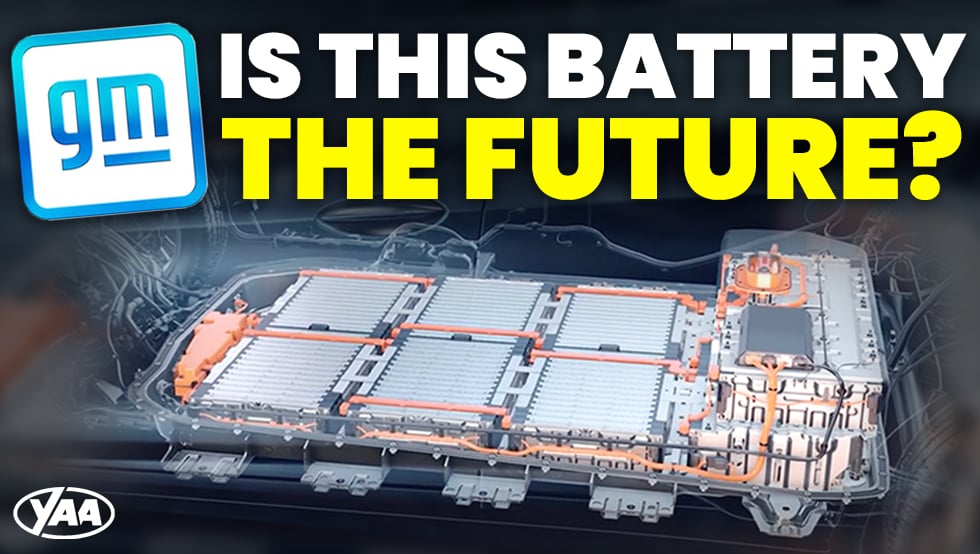
My very own Hyundai IONIQ 5 has a special trick up its sleeve. In fact, even Tesla can’t claim it. In 2022, very few electric cars are engineered with 800-volt architecture. While still an outlier, all signs point towards an auto industry heading in the direction of faster charging, better efficiency, and smaller battery sizes – all of which are unlocked by promising 800-volt electrical systems in EVs.
The mass adoption of electric vehicles largely depends on the ability to find real solutions for a few ownership challenges for today’s EV drivers:
Most electric vehicles in 2022 are built on 400-volt systems, but these systems have limits. Indeed, some automakers are quite happy with their 400-volt EV platforms. Tesla manages to find other ways of mastering efficiency and power delivery, and has not mentioned plans for a voltage upgrade. One BMW senior engineer called settling with a 400-volt platform the “best compromise”, but not everyone agrees.
800-volt systems can deliver double the power through the same current, or if desired, the same power through half the current. The result is roughly 50% faster charging for the same battery size. As a result, batteries can be made smaller and overall weight is reduced, increasing efficiency and ideally lowering the cost of the vehicle.
Would a car need a massive battery with a 500-mile range if it can charge a smaller battery that’s good for 250 miles in just 15 minutes? What is that smaller battery was A LOT cheaper?
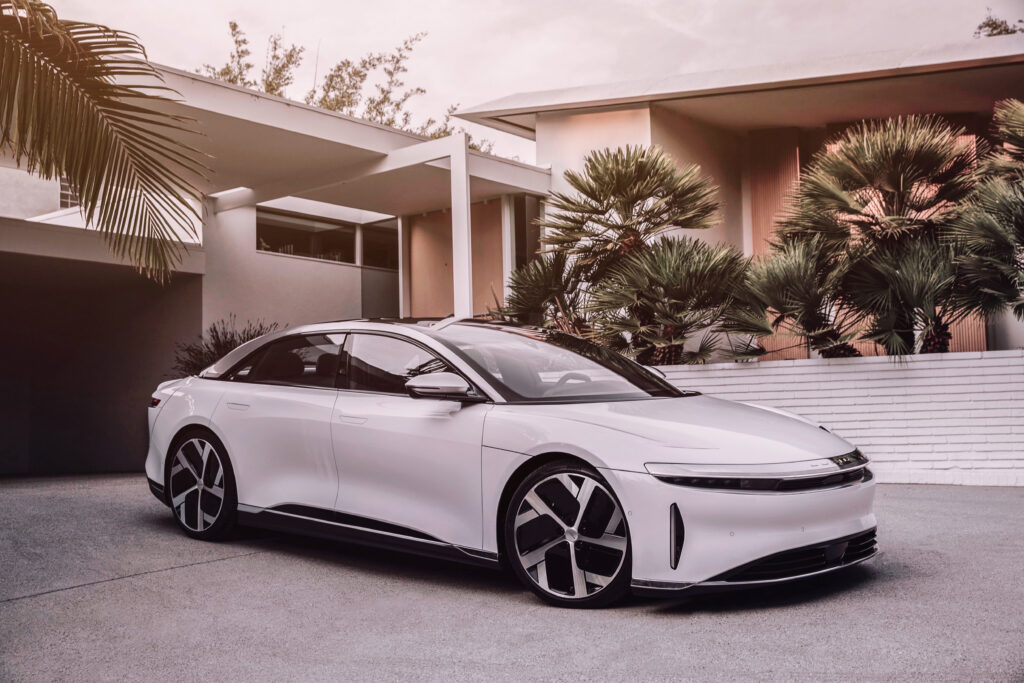
In 2022, just a few electric vehicles use 800-volt systems for power delivery and charging.
Of particular interest is the different paths taken by Ford and GM for their upcoming electric trucks. The F-150 Lightning is built on 400-volt architecture, while the Chevrolet Silverado EV is jumping to 800-volt architecture, and the result is much faster charging speeds for the Chevy. Will this matter to consumers, or will brand loyalty win out?
Why doesn’t Tesla use 800-volt charging? We’re not sure, but clearly they’ve found success with their existing 400-volt architecture.
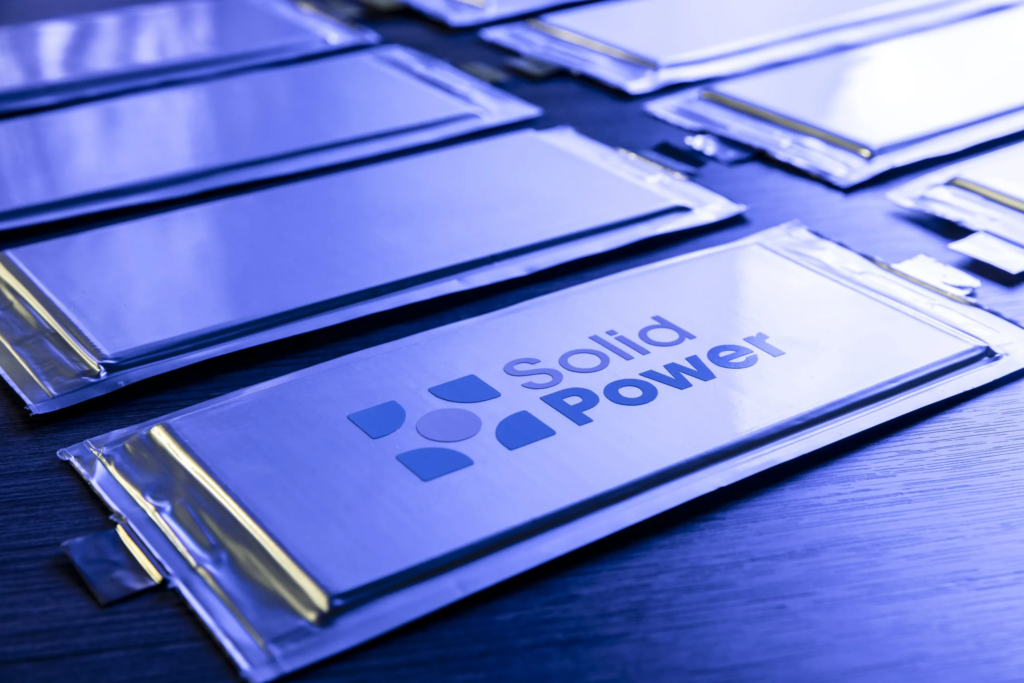
Fortunately, a whole host of solutions are uniting to offer a better way forward for EVs. And it’s not all about charging speeds. Solid-state batteries are finally approaching real-world usability following decades of research and development. For the better part of the last decade, $100 per kilowatt-hour was the affordability target for battery development. That goal was reached, but the latest raw material shortages are sending prices back up, and electric car prices have gone up accordingly. The U.S. Department of Energy thinks that $60 per kilowatt-hour is within reach, however it’s increasingly looking like solid-state batteries may offer the only path to such low-cost batteries.
Toyota says it will be the first to bring a solid-state battery into a production vehicle. In typical Toyota fashion, their solid-state battery will debut in a hybrid powertrain rather than a full battery-electric vehicle. It looks like the world will see what solid-state battery chemistry is capable of in 2025.
Faster charging, better range, and (hopefully) lower prices are promised time and time again with every new EV model announcement. 800-volt architecture and solid-state batteries are the headlining developments that automakers are working on behind the scenes. We didn’t even touch on new battery chemistries, manufacturing methods, and electric motor breakthroughs in the works. We’ll have to save that for another day, as there’s always something new to talk about in the EV space.
But the promise of faster charging and energy-dense batteries begs the question: would you take faster charging over more range? It’s looking like that will be the EV debate of the decade. What are your thoughts? Let us know in a comment or over at the CarEdge Community Forum. What matters most when you head out on a journey?